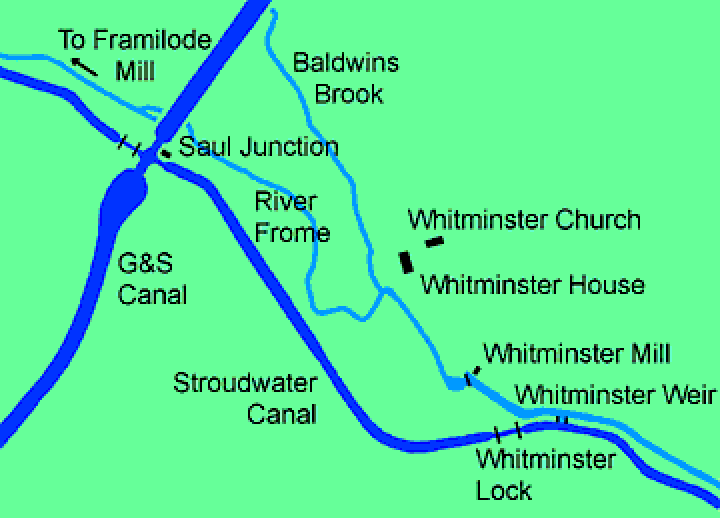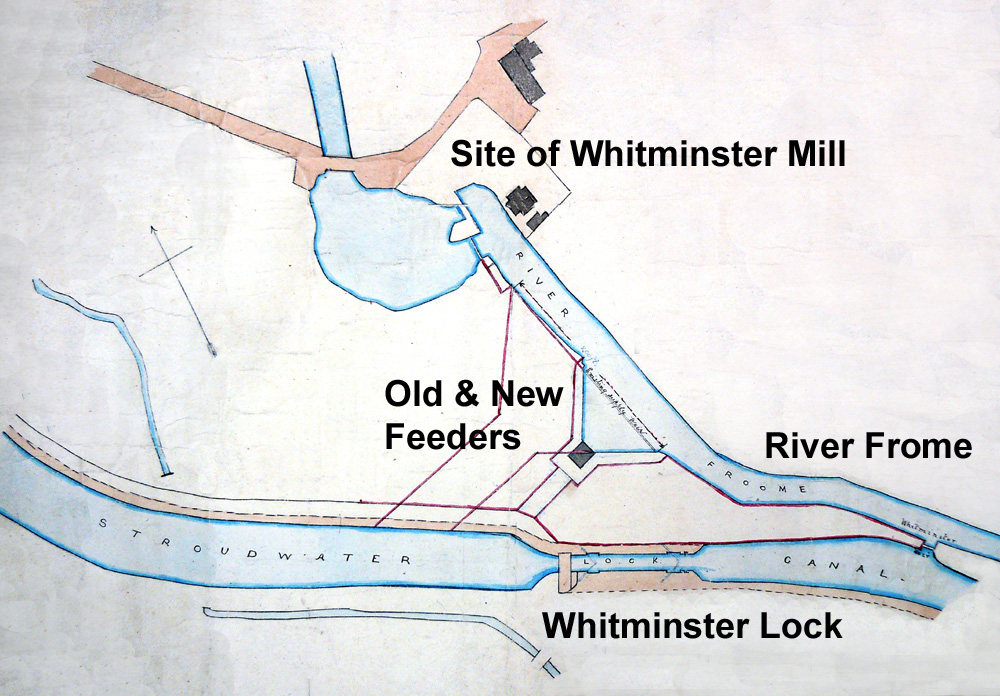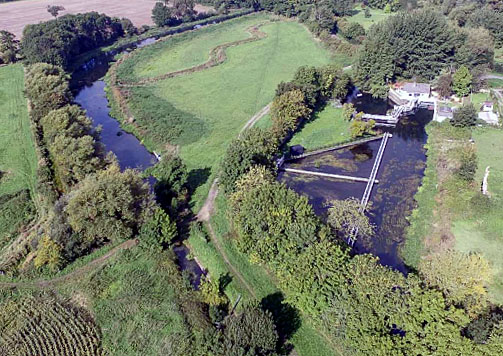The feeder from the River Frome to the Stroudwater Canal was a significant source of water for the nearby Gloucester ship canal.


In the early days of the Stroudwater Canal, a weir just above Whitminster Lock allowed water from the nearby River Frome to feed the canal on Sundays when the river was high because Whitminster Mill was not working.
Following the opening of the nearby Gloucester ship canal, however, this feed occasionally needed to be taken during working hours to replace that lost when the ship canal locks were in use. This was contrary to the agreement between the Stroudwater Company and the millers, and in 1833, the owner of Framilode Mill downstream brought his men up to block off the weir.
The owner of Whitminster Mill was more sympathetic to the canals' needs, and he reopened the weir. This closing and reopening was repeated several times over the following days, with increasing numbers of men involved on each side and growing violence. After many cuts and bruises and two broken legs, the dispute was temporarily suspended after the manager of the Gloucester ship canal brought 60 men from Gloucester to destroy the structure of the weir. For more details, visit Whitminster Weir.


Following the dispute in 1833, the managers of the Gloucester ship canal realised they needed a secure water supply. So, they bought the two lower mills on the River Frome and their water rights, and they built a short feeder to allow water from the Frome to flow into the Stroudwater Canal as much as required. This was replaced by a larger feeder c1877 to provide more water to suit a large new lock and dock at Sharpness.
Recognising that the water taken from the River Frome would bring silt into the Stroudwater Canal, it was part of the original agreement that the Gloucester company undertook to dredge from the feeder to Saul Junction as required. In the early days, this meant a team of men working a spoon dredger for several weeks each springtime, but after Walk Bridge was widened in 1869, a steam-powered dredger did the job in only two weeks.


The feeder is still in use today, now hidden from the towpath behind a brick wall. After the Stroudwater Canal closed in 1954, the length to Saul Junction was bought by the British Transport Commission to maintain the water supply to what is now known as the Gloucester & Sharpness Canal.
This length still performs this role, now controlled by the Canal & River Trust, and it will continue to do so after the rest of the Stroudwater Canal has been restored. The outfall of the feeder is under a concrete ledge in the canal bank below Whitminster Lock.
For the Battle of Whitminster Weir, see D2115/2.
For creation of the Whitminster feeder, see many entries in D1180/1/3 & 4 and D1180/9/2.
For the larger feeder, see D2460/4/7/9/3; D1180/1/6 p210-227.
For the benefit of using a steam dredger, see D2460/4/4/1 Mar 1870.